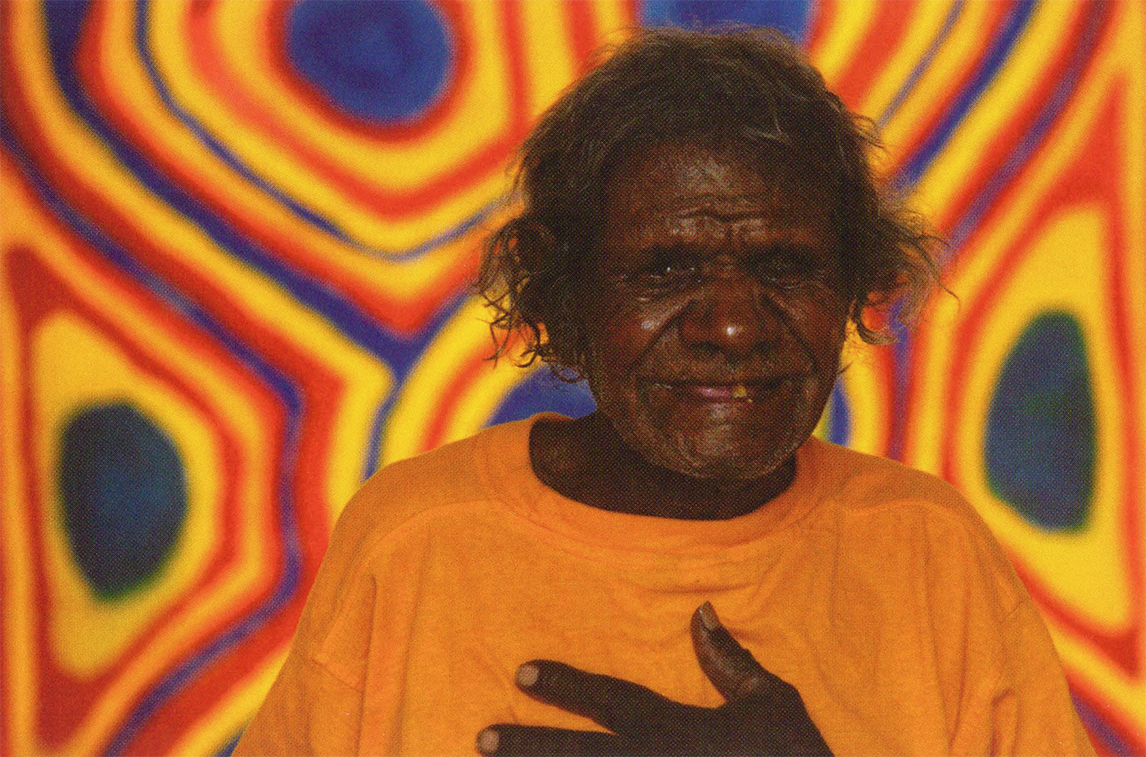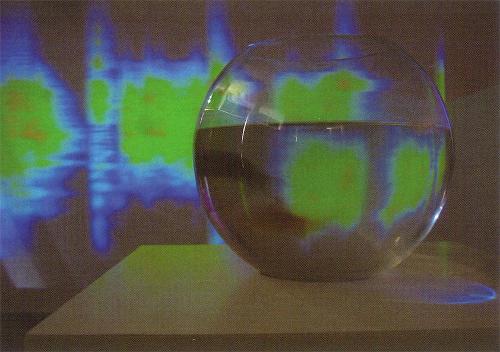
Despite a relatively short lifespan, Darwin's Raft artspace has relocated once (from Frances Bay to Parap) and now doubled, with the December 2003 launch of Raft II. The original marina site, while fringing Darwin's CBD and an historical touchstone for the gallery's evocative name, was always a tad marooned. Frances Bay just doesn't have the same pull as Cullen Bay, Darwin's trendy mid-'90s Gold Coast-style marina development. Parap, however, a short drive from the city, draws a regular throng with its famous Saturday market and has long been the home of Darwin's 24HR Art, housed in the former Parap ('Pictures') Theatre.
Raft's neighbouring 24HR Art has meant convenient dual openings and the slight though stirring suggestion of a fine art precinct, more so now with Raft's offshoot street-level gallery just down the road. The suburb's name is onomatopoeic – formerly known as 'Parap Parap' in whitefella vernacular homage to the black cockatoos that frequented the locale's once-permanent waterhole. Having left the coast, Raft maintains a connection, however temporal, with water. (Black cockatoos still visit the suburb in small numbers.)
In Kurtal, the solo exhibition of paintings by Fitzroy Crossing (WA)-based Nyilpirr Spider Snell which opened mid-week (December 3, 2003) at the 'mother' Raft, the concept of water reigns supreme. Kurtal is an important permanent waterhole in the Great Sandy Desert region and also a recurring subject in the work of some of Balgo's artists (particularly the late Susie Bootja Bootja). Kurtal the site is distinct from (but intrinsically related to) the mythical 'Kurtal' being – bringer of rain - so powerfully rendered through the work of the late David Jarinyanu Downs, Spider's brother.
The septagenarian Snell is better known for his ceremonial dancing and he is one of a few Kimberley artists who continue to make hand-held ceremonial headdresses which often symbolise 'Kutu Kutu', Kurtal's rain cloud manifestation. A photograph of Spider dancing graces the cover of the Oxford Companion to Aboriginal Art and Culture (2000) and he is the subject of a recent ABC-commissioned award-winning documentary, 'Kurtal – Snake Spirit' (2002/03). The ceremonial primacy of his paintings was clearly demonstrated at the opening before an audience that included representatives from Top End Aboriginal art centres in Darwin for ANKAAA's AGM. Over two hours, Spider danced each painting to its eventual place on the gallery wall in an opening, wrote The Australian's Nicholas Rothwell, 'that marked a step beyond the standard stilted way of managing these events& it was theatre, an enlivening of paint as much as the unveiling of a static display. It was a manifesto, too, for a new way of conceiving desert art.' (Broadening the canvas, The Australian, December 12, 2003)
Raft had previously shown work by Spider (and two other artists from Mangkaja Arts) earlier in the year (March) but this solo exhibition was a definite bonus, allowing for a more studied appreciation of Spider's distinctive iconography and its perfectly scaled radiance. 'These works would have been too powerful to show in the new gallery', explains Raft's director Dallas Gold, hinting at a different conceptual approach to the more contained space of Raft II with its prime street corner position and street-facing partitions.
Fitzroy Fusion, a group exhibition of Fitzroy Crossing's Mangkaja artists, was the show that launched Raft II (6 December 2003), replete with big-name artists (Daisy Andrews, Dolly Snell, Purlta-Mary Anne Downs and Nyuju-Stumpy Brown) alongside newcomers such as Stumpy's children. Initially revered for their gouache works on paper, Mangkaja's artists make the transition to acrylic on canvas with consummate ease. This exhibition also unveiled the work of a few artists such as Djalyi-Widgee Henry with stylistic affiliations closer to the desert art of the so-called Spinifex People further south.
Mangkaja's long-time coordinator Karen Dayman deserves credit for facilitating this soulful display of old and new talent, as well as for Spider's memorable exhibition opening. Gold, however, has certainly kept abreast of the Kimberley-wide painting movement with artists from Jirrawun, Waringarri and Mangkaja in particular helping to keep the gallery afloat& and expand. Darwin audiences are the richer for Raft and Raft II and one would like to think Spider's performance played some part in triggering this season's gloriously wet Wet.












